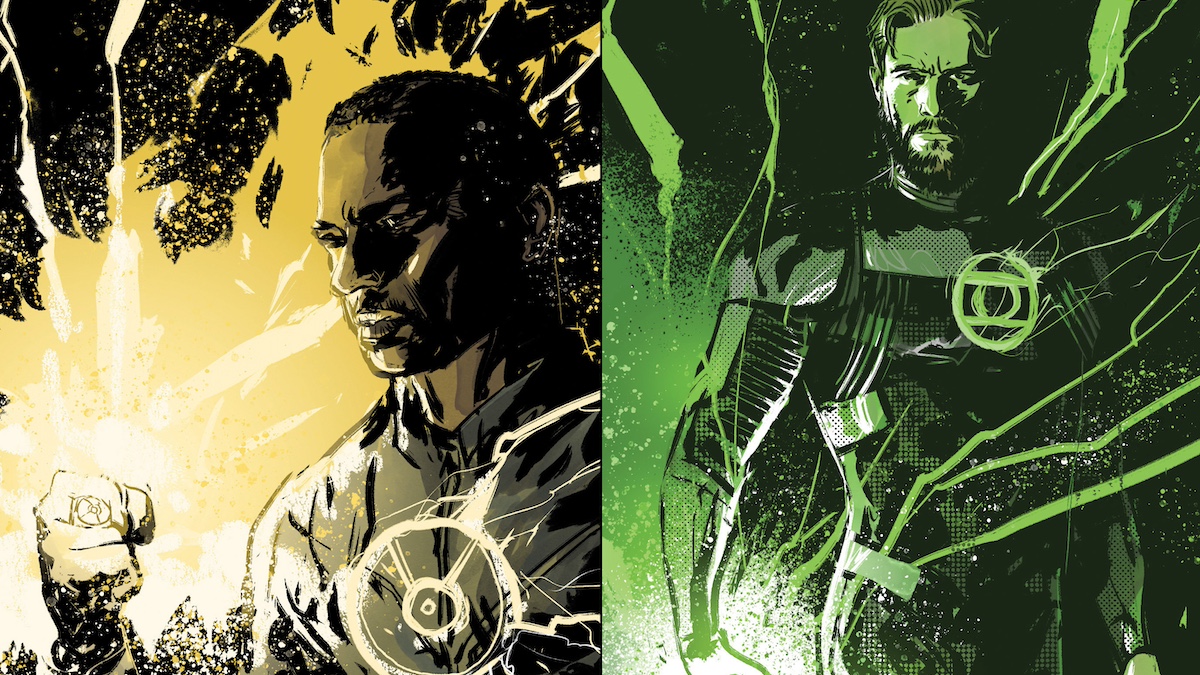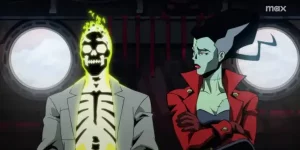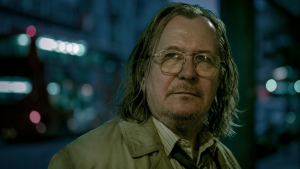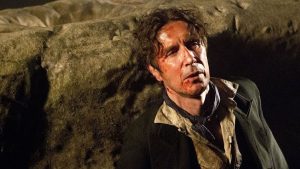
Yesterday was the brightest day for a certain type of nerd. Not only did Variety announce that Lanterns, the television series based on Green Lantern, was given the green light for an eight-episode first season, but comic book writer Tom King and Damon Lindelof of Lost and The Leftovers fame would join True Detective: Night Country producer Chris Mundy as writers and producers.
Yet, what will the average viewer think of when they hear about a new Green Lantern live action show? They’ll imagine Ryan Reynolds sitting in front of a garish green object and saying, “I Hal Jordan do solemnly swear to pledge allegiance to a lantern that I got from a dying purple alien.”
Reynolds’ usual snarky delivery isn’t the only problem with 2011’s Green Lantern. The effects were ugly, Jordan was written as a jerk, and the movie relied on exposition to explain its lore.
Green Lantern has long been one of the most popular series in comics, so it makes sense that DC Studios heads James Gunn and Peter Safran would want to bring the characters to their newly rebooted shared universe. But selling Green Lantern to the general public will be harder than any of their other properties.
Blackest Night
In Hitman #18, Garth Ennis, John McCrea, and Steve Dillon introduced Dogwelder, a hero who welds dogs to villains. Why would anyone make such a character? Because someone challenged Ennis to come up with a name dumber than “Green Lantern.”
A typically mean-spirited joke from Garth Ennis is hardly the only hurdle facing any Green Lantern adaptation. The name is indeed goofy, vestigial nomenclature from the first version of the character during comics’ Golden Age, when companies unironically produced stories with heroes called the Green Llama, the Whizzer, and the Red Bee.
That first version of Green Lantern was Alan Scott, a magic-wielder with a wishing ring, as creators Bill Finger and Martin Nodell drew from the Aladdin myth. In 1959’s Showcase Comics #22, DC Comics editor Julius Schwartz introduced the Silver Age Green Lantern, with a story written by John Broome and penciled by Gil Kane.
Schwartz copied wholesale from the Lensmen novel series by E.E. King to create the Green Lantern Corps, an intergalactic police force under the charge of the immortal Guardians of the Universe. Test pilot Hal Jordan became the new Green Lantern of Sector 2814, which includes Earth, after given his ring by dying alien Abin Sur. The ring chose Hal because he was fearless and honest, and allowed him to create anything he imagined by harnessing his willpower. However, the ring would not work on anything that was yellow, because yellow is the color of fear.
Over the years, the mythos grew only more complex, as the Guardians became more ethically dubious and other humans became Lanterns, most notably John Stewart, Guy Gardner, and Kyle Rayner. Plus, Hal did some pretty terrible things, including using a racial slur to refer to his Inuit best friend Tom, going crazy and committing genocide, and… uh, dating a thirteen year old.
In short, Green Lantern is a tough sell to the larger public, and that’s before we even talk about other Lantern Corps based around different colors and emotions (example: the Red Lantern Corps harnesses rage and spews crimson bile). Or that the chief Green Lantern baddie is a guy who looks like the devil and is named Sinestro, and he’s a tragic figure with rich emotional depths.
Complicating things further is the way that Green Lanterns will be introduced in the new DC Universe. Before Lanterns airs on Max, Superman viewers will meet Hal Jordan’s successor as Green Lantern of Sector 2814, Guy Gardner. Played by Nathan Fillion, Guy Gardner is a brain-damaged jerk who uses his ring to pursue his own desires as much as he does to save the day.
Between the terrible 2011 movie, the complicated comic book mythology, and the strange roll-out in the new DC Universe (which includes a ring cameo in Blue Beetle), one might ask why Gunn and Safran would even bother with Green Lantern. Just accept that you got Arm-Fall-Off Boy (aka TDK in The Suicide Squad) and Peacemaker on the big screen and call it a win.
The answer is simple: because Green Lantern is awesome.
Brightest Day
At the end of the 1996 crossover Final Night, Hal Jordan once again becomes Green Lantern. He had gone mad and transformed into the villain Parallax, using the immense power that he stole by destroying the Green Lantern Corps to rewrite reality to his own ends. However, when he realizes that only he can save humanity by reigniting a dying sun, he does so willingly.
He plunges into the fading star and allows himself to be consumed by the flames, all while reciting his oath: “In brightest day, in blackest night, no evil shall escape my sight…”
That’s just one of the more basic acts of superheroism from Green Lantern history. There’s also the John Stewart-focused Green Lantern: Mosaic, in which the ring manifests the darker corners of Stewart’s subconsciousness. There’s the genre-defining stories done by Alan Moore and Eddie Campbell, in which an alien from a planet without color or light channels his ring through musical tones. There’s the recent run by Grant Morrison and Liam Sharp, a mind-boggling cosmic cop tale in which Hal and John arrest God and other reality-warping threats.
Because the Green Lanterns harness imagination, writers and artists can let loose with their own imaginations when telling stories. The 2011 movie failed to understand this principle, which is why Hal imagines a machine gun and other weapons most of the time, only once making a more interesting race-car track to catch a falling helicopter.
But the creative team for Lanterns features people who know how to tell high-concept stories. In particular, Damon Lindelof and Tom King have both made their reputation on emotionally rich, imaginatively daring, and often controversial stories.
People still know Lindelof best as one of the guys from Lost, but he also adapted a clever Tom Perotta novel into one of the most powerful meditations on grief and hope in television history with The Leftovers. Instead of once again slavishly recreating (and thus misunderstanding) Watchmen, Lindelof and his co-writers made a powerful statement on police violence and America’s racial history.
Many comic readers still rue Tom King for a truncated Batman run and the (underrated) miniseries Heroes in Crisis, which suffered from editorial intervention. But he’s proven to be one of the most unique voices in mainstream comics, using Mister Miracle to tell a story about depression and The Omega Men (co-starring Green Lantern Kyle Rayner) to portray insurgencies and resistance fighters.
It’s hard to think of a better set of creatives to embrace everything weird and wonderful about Green Lantern, to make it so much more than a show about space cops. Will that be enough to make people forget about the 2011 movie or get over the convoluted central concept? Maybe not. But it even if it fails, Lanterns might show the full potential of adapting weird comic book concepts into live action, which is, of course, the entire point of superhero genre.
Lanterns will debut on Max.
The post Green Lantern TV Show Needs to Redeem the Terrible Ryan Reynolds Movie appeared first on Den of Geek.







